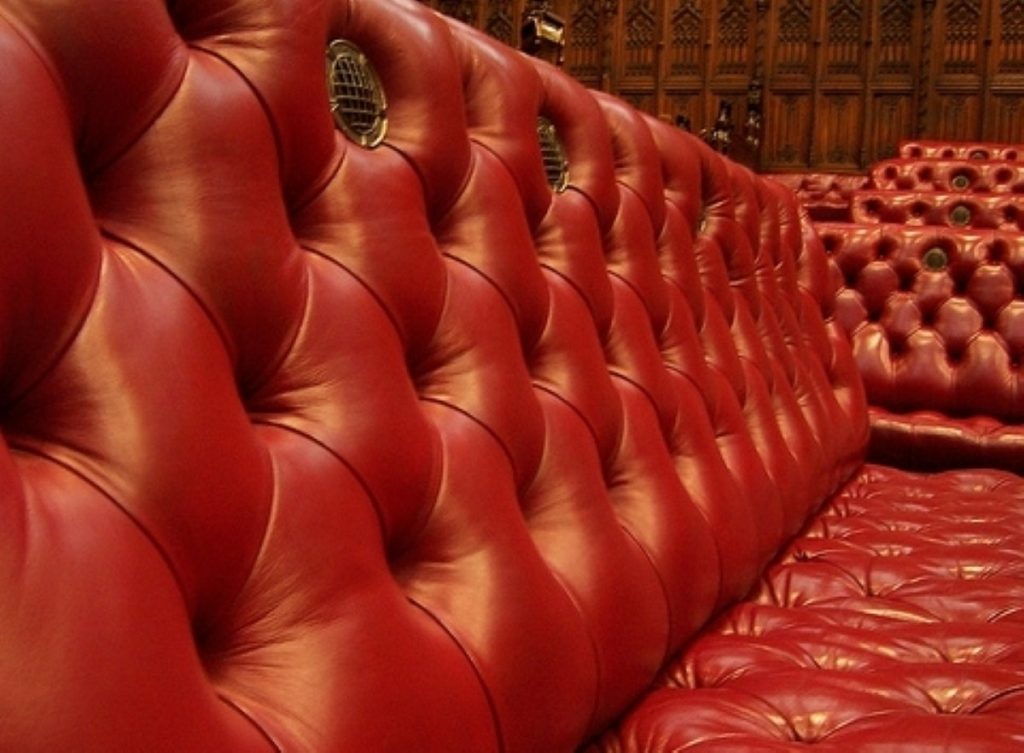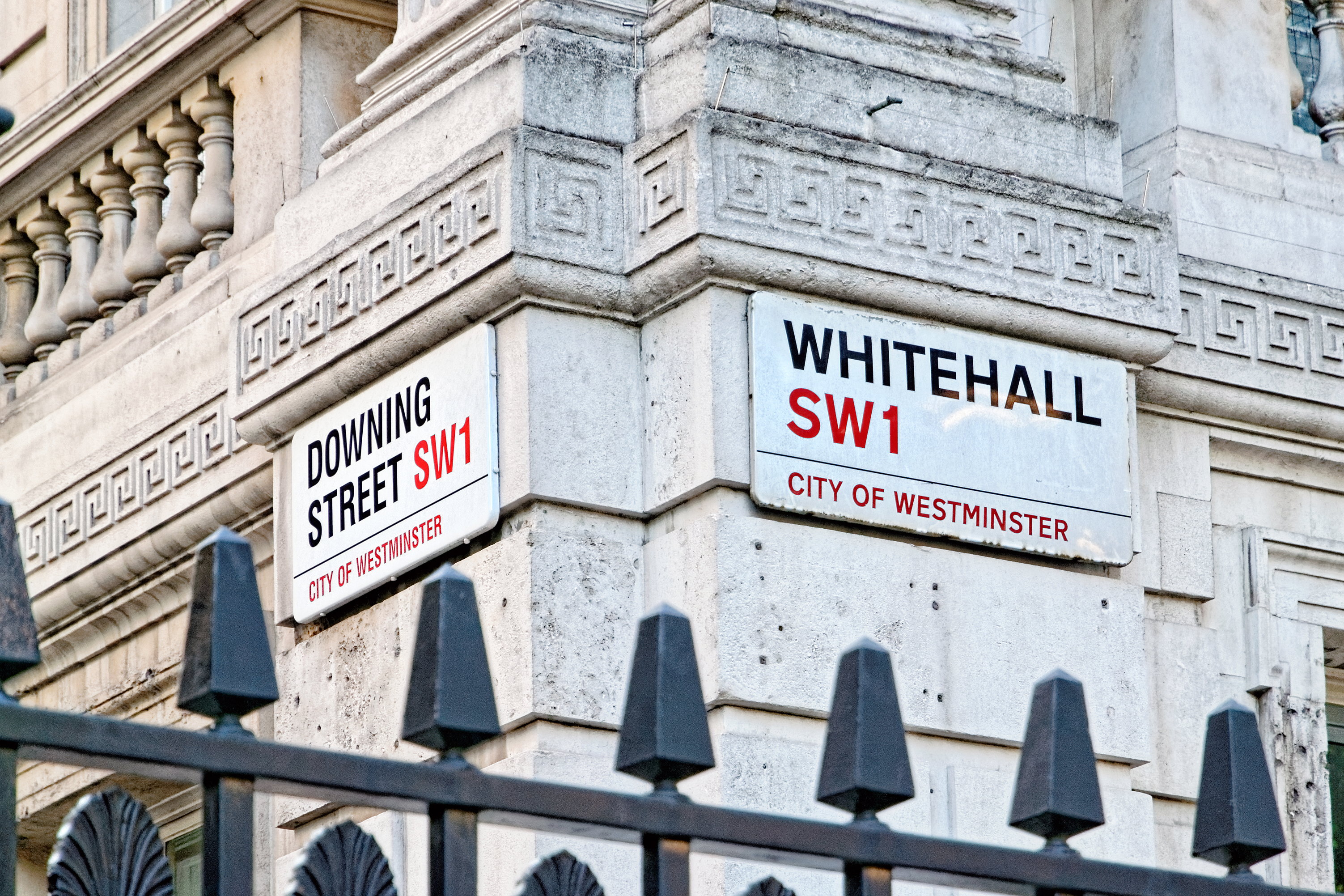The House of Lords is the second chamber of Parliament and is also called the Upper House. Because it is not elected, it does not have the same powers as the Commons, but it retains the right to revise and scrutinise the Government’s actions and legislation.
The 800 Peers who sit in it are said to have independent minds and extensive expertise and thereby form a crucial check on the power of the executive in Parliament. However the House of Lords is much more likely to wield this power by asking Ministers to think again, rather than to veto whole pieces of legislation.
Members of the Lords fall into the following three categories: Life Peers, the remaining elected hereditary Peers (collectively the Lords Temporal), and Church of England archbishops and Bishops (the Lords Spiritual).
The majority of peers are appointed by the Queen on the recommendation of the Prime Minister or of the House of Lords Appointments Commission.



The House of Lords is the second largest, second Chamber in the World, after the National People’s Congress of China.
Criticisms of the House of Lords
Supporters of the House of Lords point to its role as a useful check on the power of the Executive, and suggest that the expertise possessed by its members after their range of distinguished careers, helps with the accountability of power and the effective scrutiny of proposed legislation.
There is however a strong body of opinion that argues for reform of the current composition and operation of the House of Lords. As detailed in the History section below, during the last two decades there have already been a number of reforms to the composition of the House of Lords.
Aside from the democratic arguments made by those calling for a fully elected second chamber, a number of specific criticisms are also levelled at the current House of Lords.
It is suggested that rather than being composed of distinguished and eminent experts from a range of fields, the House of Lords is still too overtly dominated by political appointees. In particular attention, attention is drawn to the high volume of ex MPs and former government political advisors sitting in the the Chamber.
It is also argued that the makeup of the Lords does not reflect the social and demographic diversity of the UK, and that there is a distinct under-representation of ethnic minorities, women, and young people. In this regard, the House of Lords differs from the House of Commons, which is seen to have become steadily more representative in the last quarter of a century.
The continued existence of a sizeable block of Church of England Bishops in the House of Lords is also considered to be out of touch with both the secular nature of the UK, and the wide range of other religions that now exist within it.
It is pointed out that only the Vatican, Iran, and the UK, now continue to provide clerics with such an automatic and privileged position in their legislatures.
Finally the House of Lords is often criticised for being too large. Whilst in the late 1990s, the House of Lords had 1,300 members (many of whom were hereditary), it is remarked how few of them ‘ever turned up’. With over 800 members, the House of Lords is considerably larger than the Upper Houses in comparable countries. This is said to result in unnecessary costs for the taxpayer, and to compromise the chamber’s effective operation.
It has been pointed out how the House of Lords is now actually the second largest legislative chamber in the world, second only to the National People’s Congress of China.
‘Cash for peerage’ revelation shows Lords ripe for reform, say campaigners
Options for reform
The principal controversy regarding House of Lords reform revolves around what should replace the current Second Chamber.
Democracy campaigners champion the case for a fully elected Second Chamber. They warn that even a partially appointed Chamber places too much power in the hands of those making the appointments, who have historically been Prime Ministers and to a lesser extent Opposition Party leaders. They argue that only a legislature elected by voters is appropriate.
On the other side, opponents of a fully elected Chamber warn that the democratic mandate of an elected House would undermine the primacy of the Commons and potentially lead to legislative deadlock. Opponents of a mixed system (half elected, half appointed) argue that there is no basic rationale for such a mixture.
A number of secondary debates then currently exist in relation to the composition of the House of Lords as it is today. The membership of Church of England Bishops, based on the position of the established church, is deemed by some to be anachronistic and discriminatory.
Proponents of a reformed House argue variously in favour of the appointment or election of regional representatives or representatives of sectional, community and cultural groups, as a means of improving the representative character of the House while distinguishing it from the Commons.
Criticisms of the House of Lords have led some to suggest that there is no need for a second house at all, with people questioning the relevance of a bicameral system in British politics. Some, notably the former Labour MP Dennis Skinner, have thus argued for the outright abolition of the second Chamber.
The House of Lords reform debate – A history
Background
Historically, the power of the Lords – the representatives of the landed interests – was greater than that of the Commons, but as democratic ideals took root in the UK, its power has gradually been eroded.
The primacy of the Commons was explicitly stated by the Parliament Act 1911, which compelled the Lords to approve financial legislation, and the Parliament Act 1949, which removed the Lords’ power of veto over laws.
Today, the debate about reform of the House of Lords refers more to its composition than to its powers. Until the Life Peerage Act 1958, with the exception of the Law Lords and the Bishops, the right to sit in the Lords derived from membership of the hereditary nobility. The 1958 Act introduced a new type of member: the Life Peer. Life Peers may sit in the Lords for life, but their rights are not passed on to their descendants.
House of Lords Reform – 1997 to 2010
Although the growing number of Life Peers diluted the hereditary basis of Lords membership for the next 40 years, the House of Lords Act 1999 all but dissolved the power of the British aristocracy within the Chamber.
Prior to the “reforms” of 1999 the House of Lords had over 1,300 members. However, the 1999 Act removed the rights of all but 92 hereditary peers to sit in the Lords. The 92 hereditary peers that remain – are elected from among the 800 or so entitled to sit before the Act. They survive only by virtue of a compromise struck between the Labour Government and the Conservative leader in the Lords of the day, Viscount Cranborne.
A subsequent Royal Commission, led by the former Cabinet Minister Lord Wakeham, put forward a number of options for the future composition of the House, ranging from fully appointed to fully elected, with a series of compromises in between.
The Commons, however, was unable to reach a ‘consensus’ on any option. The Government then tried to remove the remaining hereditary Peers through its House of Lords Reform Bill, which it described as the first stage of wider reforms, but this was dropped in March 2004 after it became clear that it would not be passed by the House of Lords.
The publication in 2007 of a white paper on House of Lords reform was followed by a free vote in both Houses on the composition of the second chamber. The Commons voted overwhelmingly for a fully elected House of Lords. The peers themselves, however, voted in favour of a fully appointed House of Lords.
In July of the following year a further white paper was published and Justice Secretary, Jack Straw, insisted that House of Lords reform had to be based on the will of the Commons -“the primary chamber in our legislature”. This 2008 white paper set out how a wholly or mainly elected second chamber might be created within a bicameral legislature in which the House of Commons retains primacy.
A draft House of Lords Reform Bill published in November 2009 set out how the government intended to take forward the 2007 Commons vote in favour of an elected second chamber and build on the proposals of the 2008 white paper.
The Constitutional Reform and Governance Bill published in July 2009 and enacted in April 2010, provided for the abolition of the by-elections used to fill vacancies for the 92 hereditary peers.
House of Lords Reform Since 2010-
Following the election of the Conservative/Liberal Democrat coalition government in May 2010 it was announced that the two parties had agreed to establish a committee to bring forward proposals for a wholly or mainly elected upper chamber on the basis of proportional representation, with a draft bill expected by December 2010.
In the interim, the government stated, Lords appointments would be made “with the objective of creating a second chamber reflective of the share of the vote secured by the political parties in the last general election.”
The House of Lords Reform Bill announced in the Queen’s Speech on 9th May 2012 provided for elected members of the House of Lords to be voted in by a different electoral system to the House of Commons, on a proportional basis (a single transferable vote system).
The size of the Upper House would also be reduced substantially under the Bill and membership of the Lords would no longer be linked to the acceptance of a peerage.
However the Bill was subsequently abandoned due to opposition from backbench Conservative MPs, with some 91 defying a three line whip on the issue. In response, the then Deputy Prime Minister, Nick Clegg, claimed that the Conservatives had “broken the coalition contract” over the matter. David Cameron disputed this, saying that the agreement contained no specific promise to enact reform of the House of Lords.
In 2014, the House of Lords Reform Act allowed members to resign from the House, in a way that had previously not been possible. It also allowed for the exclusion of any peer convicted of a criminal offence and sentenced to a term of imprisonment of one year or more. This was followed up by the 2015 House of Lords (Expulsion and Suspension) Act that authorised the House to expel or suspend members.
In 2017, an inquiry was set up by Lord Fowler (the Lord Speaker) under Lord Burns to examine the size of the House of Lords. The committee recommended the second chamber’s size be reduced to 600, that members be appointed to 15 year terms, that 15% would be cross benchers, and that no party would have an overall majority. It also suggested that the party appointments would be linked to a General Election result.
Contrary to the Burns Commission’s recommendations of a ‘two out, one in’ approach to the departures of peers in order to move to the proposed target of 600 members, the number of peers in the House of Lords has continued to increase considerably in the last decade.
There is suddenly a chance of cross-party talks on Lords reform
Statistics
At the start of 2021, there were 263 Conservative Peers ,182 Labour Peers, 87 Liberal Democrat Peers, and 184 Cross Bench Peers.
Members of the House of Lords are not directly paid a salary, but they can chose to receive an attendance allowance for every sitting day which they attend. That attendance allowance was £313 in 2019, although Peers can chose to receive a reduce attendance allowance of £157, or not to take a payment at all.
Quotes
“The bloated House of Lords is rapidly becoming a home for defeated MPs rather than a serious scrutiny chamber. Today’s new appointees have literally just walked down the corridor from the Commons to take their cushy new jobs for life. It would be a gross hypocrisy for the government to say they care about improving democracy and then keep packing the second chamber with cronies and apparatchiks. These appointments must be the last. Voters are tired of the role of unelected power in politics and the public want and deserve an overhaul. The time for reform is now.” – Willie Sullivan, Senior Director, Electoral Reform Society, 2020
“Electing the second chamber is not self-evidently the democratic option – by dividing accountability it can undermine the capacity of the people to hold government to account (since policies may emerge for which it is not directly responsible) and can sweep away the very benefits that the present system delivers.” – Lord Norton – March 2012










